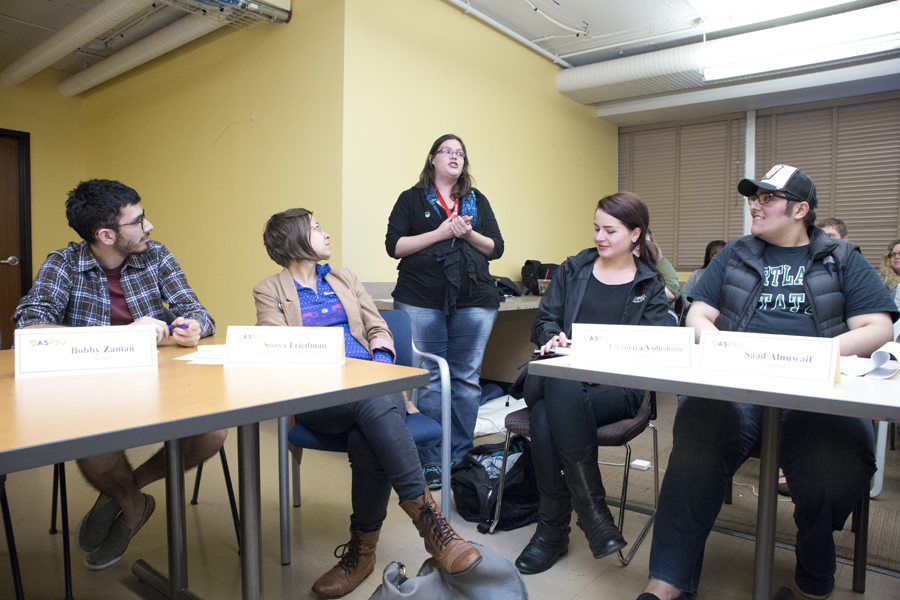After it rained, Vikings starting quarterback Drew Hubel noticed that the field at PGE Park remained abnormally wet and slippery, especially towards the north end zone. Hubel played his senior year of high school on state-of-the-art FieldTurf, the same turf used in 21 of 32 NFL stadiums, Autzen Stadium, Reser Stadium and PSU’s Stott Community Field. By contrast, PGE Park’s NeXturf surface, installed in 2001, had significant problems draining in addition to being unforgiving to land on.
Stadium facelift gets Viks’ seal of approval
After it rained, Vikings starting quarterback Drew Hubel noticed that the field at PGE Park remained abnormally wet and slippery, especially towards the north end zone.
Hubel played his senior year of high school on state-of-the-art FieldTurf, the same turf used in 21 of 32 NFL stadiums, Autzen Stadium, Reser Stadium and PSU’s Stott Community Field. By contrast, PGE Park’s NeXturf surface, installed in 2001, had significant problems draining in addition to being unforgiving to land on.
NeXturf is the same surface that was installed at Autzen Stadium in 2001 and replaced with FieldTurf one year later after performing poorly during the season.
“It’s probably not my favorite surface to play on. It got the job done but it’s not the most desirable,” Hubel said. “It was almost nicer to have away games because you get to play on a surface you like.”
Now the multiuse ballpark, home to the Triple-A Beavers, Portland Timbers and Portland State’s football and women’s soccer teams, will finally be updated with the modern surface known as FieldTurf.
“It was determined that FieldTurf was the ideal surface for us here due to our different sports and frequent conversions,” said Chris Metz, PGE Park vice president of communications.
Metz described the seven years since the NeXturf surface was installed as “seven years of pretty heavy use,” and said that replacing the turf was never a question of if, but when.
FieldTurf uses silica sand and cryogenic rubber to emulate natural grass and is known for its ability to be quickly adapted to the needs of the stadium.
“Ultimately, player safety is a concern for us,” Metz said. “When the Metrodome in Minnesota got FieldTurf we took notice of that, because obviously you’ve got football and baseball there. All of those factors were taken into account.”
Portions of the existing NeXturf surface were donated to area schools, including Westview High School, Metz said.
The project, expected to cost approximately $1 million, will be completed in time for the Pape Grand Slam Feb. 29, when the Oregon State Beavers baseball team takes on the University of Georgia for a three-game series. In addition to the new playing surface, the warning track will be repaired and resurfaced.
Hubel said playing on FieldTurf slows the game down slightly compared to other surfaces.
“The one good thing about Astroturf [a precursor to NeXturf] is you can play real fast on it. Everybody’s faster on it. When you get on FieldTurf, it’s a little more forgiving but you won’t be as fast,” Hubel said.
Even so, Hubel said FieldTurf is a big improvement and should slow the spread of staph infections, a problem with the old turf.
“It’s going to be awesome. Nobody likes getting 30 or 40 skinned up elbows and knees and arms every game. From that standpoint, it’s going to be nice not to have to worry as much,” he said. “It’s a good surface to play on, [however] the difference in the football game isn’t all that much.”
Tim Bennett, women’s soccer head coach, said he’s excited about the prospect of a new playing surface. He described playing on the old surface as playing “a different game within the same game,” due to the poor draining system.
“It would be great. It would be very similar to the surface installed at the Stott Field. It’s been very difficult to get teams to play (at PGE Park) because of the surface,” Bennett said. “This will hopefully allow us to play more games closer to campus and develop a campus following.”
Athletic director Torre Chisholm said the old surface was “physically tough to play on,” and would not be missed, though he did not know if it would increase the cost of Portland State’s lease with PGE Park.
“University of Portland women’s soccer would never play us there because of the turf. For football I don’t think it was a problem. It’s more similar to our practice field than what was there,” Chisholm said.
Football head coach Jerry Glanville, fresh off his first season at Portland State, is also enthusiastic about the upgrade.
“The turf they’re putting in is pretty exact,” Glanville said. “I think it will help us recruiting. The other turf is pretty worn out. It served its purpose and did its time. It’s a big plus for us.”





